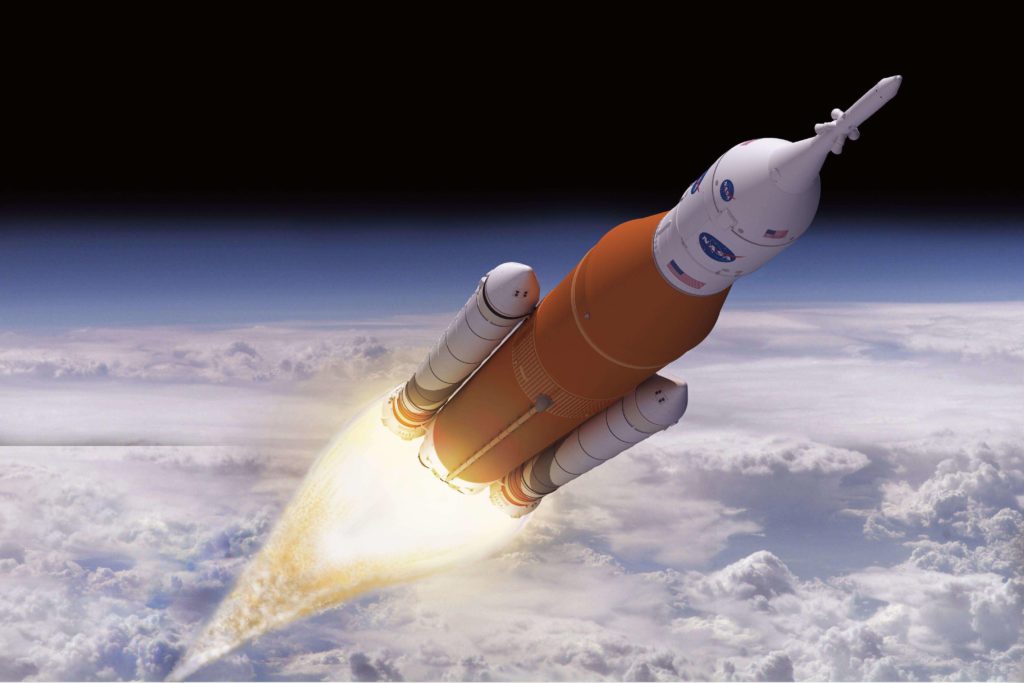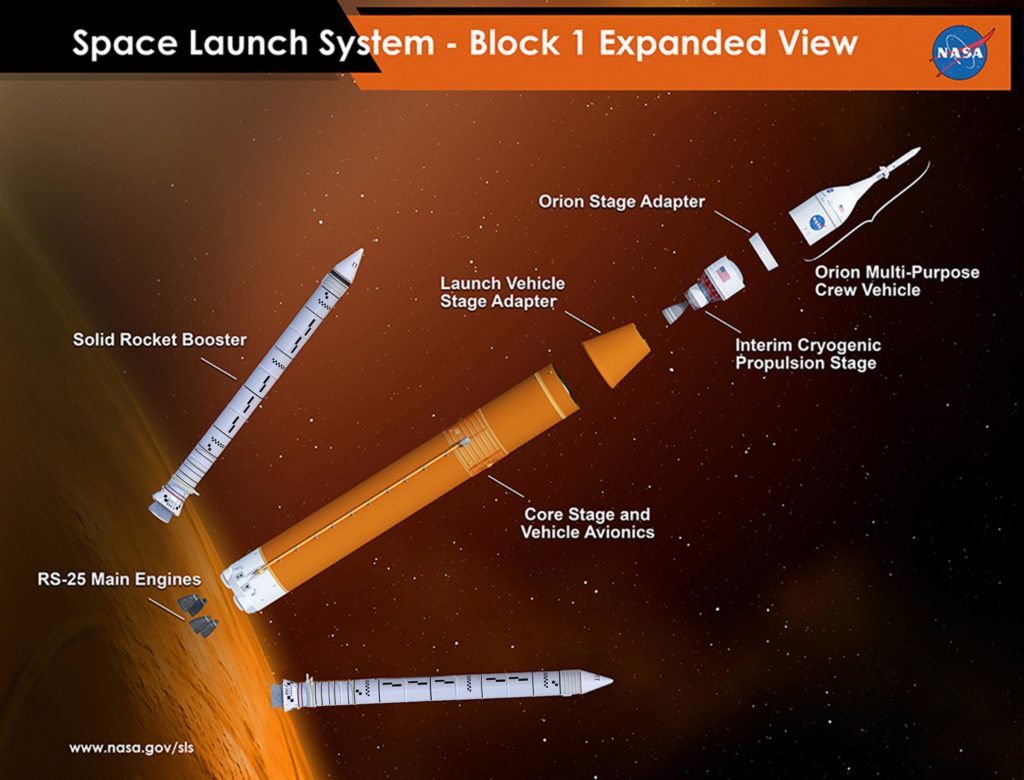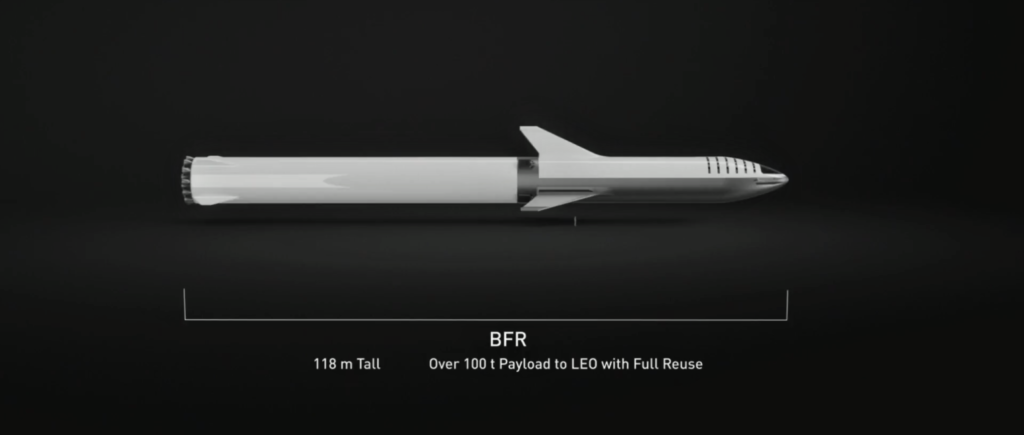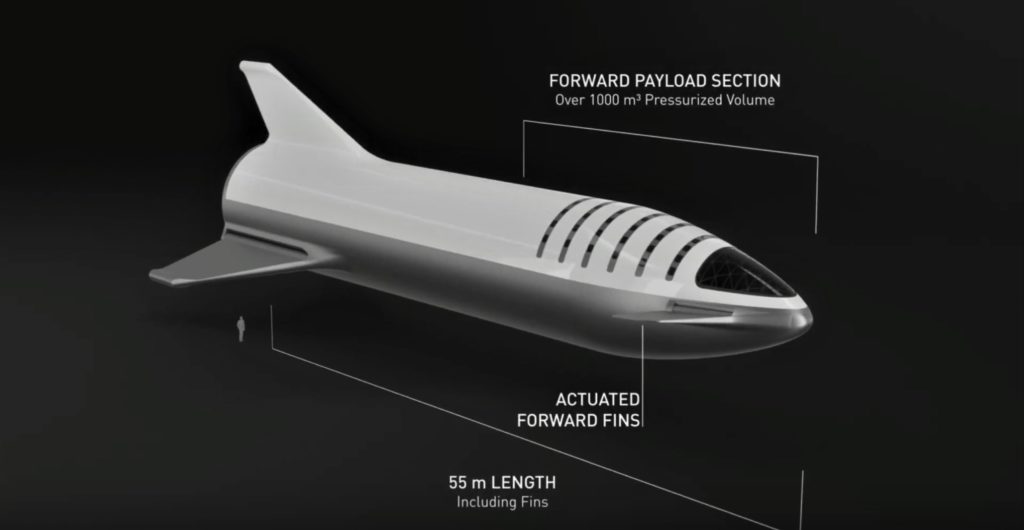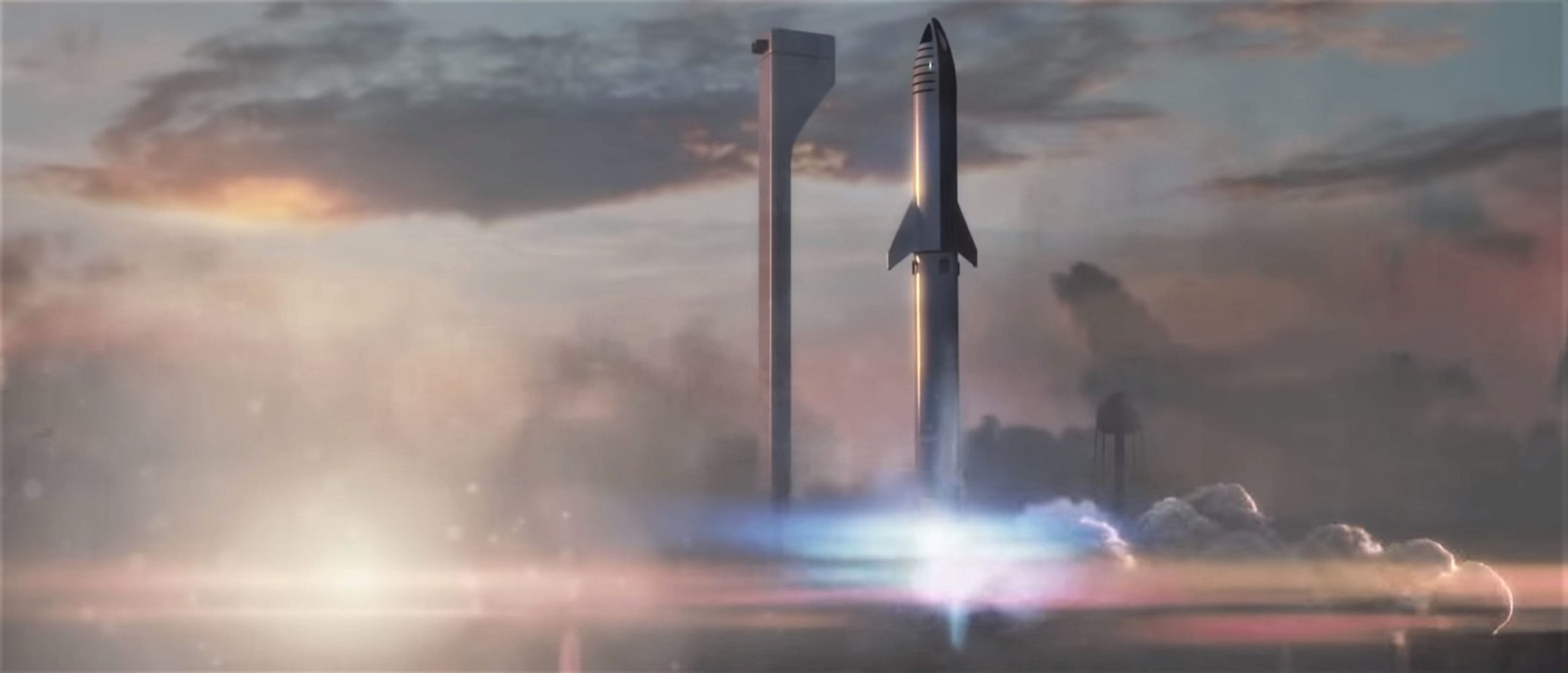
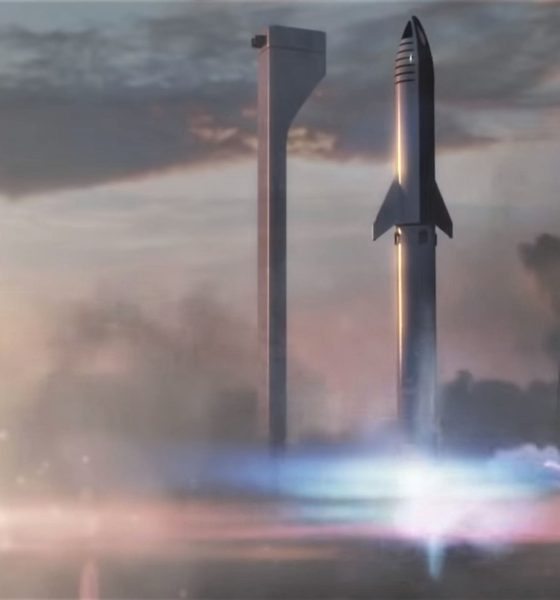
News
Elon Musk pegs SpaceX BFR program at $5B as NASA’s rocket booster nears $5B in cost overruns
At the same time as NASA’s overrun-stricken Space Launch System (SLS) continues to limp towards its continuously delayed launch debut, now tentatively expected no earlier than (NET) 2021, SpaceX is forging ahead with the development of an equivalently capable launch vehicle known as BFR, comprised of a spaceship (BFS) and booster (BFB).
During a September 17th update to the next-gen SpaceX rocket’s steady progress, CEO Elon Musk offered a rough cost estimate of $5B to complete its development – no less than $2B and no more than $10B. According to NASA’s Office of the Inspector General (OIG), Boeing – primary contractor for NASA’s SLS “Core Stage” or booster – is all but guaranteed to burn through a minimum of $8.9B between 2012 and the rocket’s tentative 2021 launch debut.
NASA is finally (officially) acknowledging that EM-1, the maiden launch of SLS, will slip until at least June 2020. Sources tell us to expect another slip to 2021, official or not.https://t.co/CYf9SqbhBY
— Eric Berger (@SciGuySpace) October 3, 2018
Originally contracted in 2014 to complete SLS booster development, production, and preparation by 2018 at a cost of $4.2B, Boeing has overrun its budget by a bit less than 50% (up to $6.2B) and overshot its scheduled launch debut by more than 2.5 years. Per an October 10th audit of the SLS booster program, NASA OIG has reasonably concluded that Boeing will pass that $6.2B expenditure estimate – meant to last until 2021 – in December 2018, meaning that at least an additional $2.7B will be required from NASA between now and 2021 if SLS is to have a chance at launching that year.
In other words, compared to Boeing’s first serious 2014 contract for the SLS Core Stages – $4.2B to complete Core Stages 1 and 2 and launch EM-1 in Nov. 2017 – the company will ultimately end up 215% over-budget ($4.2B to $8.9B) and ~40 months behind schedule (42 months to 80+ months from contract award to completion). Meanwhile, as OIG notes, NASA has continued to give Boeing impossibly effusive and glowing performance reviews to the tune of $323 million in “award fees”, with grades that would – under the contracting book NASA itself wrote – imply that Boeing SLS Core Stage work has been reliably under budget and ahead of schedule (it’s not).
- SLS Block 1. (NASA)
- An overview of SLS. (NASA)
- Rockets are perhaps even more capital intensive. (SpaceX)
- BFR 2018’s Spaceship, BFS. (SpaceX)
The “Satisfactory” Stuff
In reality, Boeing has not once been under budget or ahead of schedule during any of 6+ NASA performance reviews.
“Boeing should have received a “satisfactory” rating for [two review periods]; a “good” rating for [one review period]; and an “unsatisfactory” rating (no award fee) for [the 2017 review period].”
Instead, NASA has given Boeing three “Very Good” (nearly perfect) reviews and three “Excellent” (perfect) reviews over the last 6 years, ultimately dispersing $323M of pure-profit “award fees” thanks to those grades, while the OIG firmly disputes Boing’s worthiness for at least $65M of that sum.
It is pretty pathetic when the only response that @BoeingSpace can muster via @BKingDC at its #politicospace PR effort in response to a damning @NASA_SLS report by @NASAOIG is to dump on the Saturn V – a rocket that actually flew – and worked – half a century ago. https://t.co/daN91bzwpC
— NASA Watch (@NASAWatch) October 12, 2018
Boeing – recently brought to light as the likely source of a spate of egregiously counterfactual op-eds published with the intention of dirtying SpaceX’s image – also took it upon itself to sponsor what could be described as responses to NASA OIG’s scathing October 10th SLS audit. Hilariously, a Politico newsletter sponsored by Boeing managed to explicitly demean and belittle the Apollo-era Saturn V rocket as a “rickety metal bucket built with 1960s technology”, of which Boeing was the core stage’s prime contractor.
At the same time, that newsletter described SLS as a rocket that will be “light years ahead of thespacecraft [sic] that NASA astronauts used to get to the moon 50 years ago.” At present, the only clear way SLS is or will be “light years” ahead – as much a measure of time as it is of distance – of Saturn V is by continuing the rocket’s trend of endless delays. Perhaps NASA astronomers will soon be able to judge exactly how many “light years ahead” SLS is by measuring the program’s redshift or blueshift with one of several ground- and space-based telescopes.
Ultimately, this is a particularly effective bit of self-mockery in the context of rationale lately used by Boeing and NASA to shrug off the jaw-dropping Core Stage contract’s underperformance, missteps, schedule slips, and budget overruns, namely that building big, complex rockets is hard. NASA and Boeing, neither of which have any meaningful experience building big, complex rockets – aside from Saturn IB, Saturn V, and the Space Shuttle – thus should be given a break for reliably and dramatically underestimating the difficulties of doing so in the 21st century.
One of the most breathtaking things about the new SLS report is the response by NASA's Gerstenmaier. Essentially, he says, this a is a big, complex rocket. And it's hard to build this stuff.https://t.co/ou8SFhji6a
— Eric Berger (@SciGuySpace) October 10, 2018
Simultaneously, Boeing and NASA still continue to act as if they are the foremost global experts of building extremely large rockets and continue to throw pile upon pile of taxpayer billions at overpromised attempts to prove as much. It’s no more than a masochistic dream to imagine what could have been or might be if NASA instead redirected those billions towards US aerospace companies with track records of success through fixed-cost contracts or straight-up private funding (SpaceX and Blue Origin, primarily), but it’s often hard not to at least think about the possibilities.
For prompt updates, on-the-ground perspectives, and unique glimpses of SpaceX’s rocket recovery fleet check out our brand new LaunchPad and LandingZone newsletters!

News
Tesla 2025 Holiday Update: Here’s what it includes, and what it’s missing

Tesla has finally announced the features for the 2025 Holiday Update, which includes a wide variety of new inclusions that are both functional and just for fun.
The new features are plentiful, but there were a handful of things we were expecting to see based on what we know. We don’t want to sound ungrateful, because there are a lot of great new things on the way with this update.
Here’s what was included:
Grok with Navigation Commands (Beta)
Grok will now have the ability to add and edit navigation destinations, which is a drastic improvement considering Tesla owners had to use their standard voice commands for this in the past.

The utilization of Grok will likely improve the navigation experience by offering some insight into your destination, including reviews and other points of interest nearby.
It will be enabled by using Grok’s “Assistant” personality.
Tesla Photobooth
“Turn your car into a photobooth! Take selfies from inside your Tesla & give yourself a makeover with fun filters, stickers, and emojis. Share with others right from the Tesla app.”
This feature will be available within the Toybox.
Dog Mode Live Activity
When using Dog Mode to keep your four-legged friend comfortable in the car, you’ll now be able to check in on them as it will share periodic snapshots of the cabin, along with live updates on temperature, battery, and climate conditions.

Dashcam Viewer Update
Dashcam clips are awesome, but they’re void of a lot of information, which could be useful in some instances, especially if there is an accident.

Now, there will be additional details included on each Dashcam clip, like speed, steering wheel angle, and Self-Driving state.
Santa Mode
New graphics, trees, and a lock chime are now available.

Light Show Update
A new Light Show, called Jingle Rush, will be available.
Custom Wraps and License Plates in Colorizer
Colorizer will now be known as “Paint Shop” in the Toybox. You will now be able to personalize your Tesla Avatar with window tints, custom wraps, and license plates. Preloaded designs will be available, but owners will be able to use their USB Flash Drives to create one that suits their style.

Navigation Improvements
Changing the order of your destinations will be easier through a new “Favorites” tab, and Home and Work can now be set by dropping a pin.
There will also be “Suggested Destinations,” which will be determined through recent trips and habits while parked.
Supercharger Site Map
Perhaps the most significant feature of the Holiday Update, Tesla is adding a 3D view of select Tesla Superchargers by tapping “View Site Map.”
When navigating to a location with this capability, the site layout, live occupancy, and nearby amenities will be available. Drivers will also be able to choose which stall to Supercharge.

This is only available at a handful of locations currently, but it will expand to more Superchargers as it becomes more robust.
Automatic Carpool Lane Routing
Navigation will include an option to utilize carpool lanes. Your route will automatically choose the carpool lane when eligible.
Phone Left Behind Chime
If the in-car occupant detection system does not see anyone in the car and there is a phone key, or if a phone is left inside the cabin, your Tesla will chime a few seconds after the doors close.
Charge Limit Per Location
You can now save a charge limit for the current location while parked and it will be applied automatically the next time you charge there.
ISS Docking Simulator
In a SpaceX collaboration, Tesla has added this game to its in-car Arcade:
“Become an astronaut and prove your skills by docking with the International Space Station. Control & guide the rocket in this 3D docking simulator game using a set of controls based on actual interfaces used by NASA astronauts.”
Additional Improvements
-
Enable or disable wireless phone charging pads in Controls > Charging (S3XY) or Controls > Outlets & Mods (Cybertruck)
-
Add Spotify tracks to your queue right from the search screen & scroll through large Spotify playlists, albums, podcasts, audiobooks & your library seamlessly, without paging
-
Take the vibes up another level with rainbow colors during Rave Cave. Accent lights color will change along with the beats of your music. App Launcher > Toybox > Light Sync
-
Lock Sound now includes Light Cycle from Tron Mode. Toybox > Boombox > Lock Sound
What’s Missing
There are a handful of features we expected to see with the Holiday Update, but were not included.
Banish Feature
Tesla has been teasing the Banish functionality for quite a few years, but evidently, it is not quite there yet.
Banish will allow owners to get out of their vehicle at the entrance of their destination, and the car will go find a spot and park itself. Some refer to it as “Reverse Summon.”
Apple CarPlay
With all of the rumors regarding Apple CarPlay and then the evidence that Tesla was working to bring CarPlay to vehicles, we really expected it to come with the Holiday Update.
We’re not upset it’s not here, though. Tesla’s in-car UI is significantly better, at least in our opinion.
Parking Spot Selection
One of the biggest gripes about the new Arrival Features with Full Self-Driving v14 is that choosing a set parking spot is not available. This is especially frustrating for Tesla owners who rent or live in townhouse neighborhoods or apartment complexes with assigned parking.
Tesla seems to be working on this based on the release notes for v14.2, where it said future capabilities would include Parking Spot Selection.
News
Man credits Grok AI with saving his life after ER missed near-ruptured appendix
The AI flagged some of the man’s symptoms and urged him to return to the ER immediately and demand a CT scan.

A 49-year-old man has stated that xAI’s Grok ended up saving his life when the large language model identified a near-ruptured appendix that his first ER visit dismissed as acid reflux.
After being sent home from the ER, the man asked Grok to analyze his symptoms. The AI flagged some of the man’s symptoms and urged him to return immediately and demand a CT scan. The scan confirmed that something far worse than acid reflux was indeed going on.
Grok spotted what a doctor missed
In a post on Reddit, u/Tykjen noted that for 24 hours straight, he had a constant “razor-blade-level” abdominal pain that forced him into a fetal position. He had no fever or visible signs. He went to the ER, where a doctor pressed his soft belly, prescribed acid blockers, and sent him home.
The acid blockers didn’t work, and the man’s pain remained intense. He then decided to open a year-long chat he had with Grok and listed every detail that he was experiencing. The AI responded quickly. “Grok immediately flagged perforated ulcer or atypical appendicitis, told me the exact red-flag pattern I was describing, and basically said “go back right now and ask for a CT,” the man wrote in his post.
He copied Grok’s reasoning, returned to the ER, and insisted on the scan. The CT scan ultimately showed an inflamed appendix on the verge of rupture. Six hours later, the appendix was out. The man said the pain has completely vanished, and he woke up laughing under anesthesia. He was discharged the next day.
How a late-night conversation with Grok got me to demand the CT scan that saved my life from a ruptured appendix (December 2025)
byu/Tykjen ingrok
AI doctors could very well be welcomed
In the replies to his Reddit post, u/Tykjen further explained that he specifically avoided telling doctors that Grok, an AI, suggested he get a CT scan. “I did not tell them on the second visit that Grok recommended the CT scan. I had to lie. I told them my sister who’s a nurse told me to ask for the scan,” the man wrote.
One commenter noted that the use of AI in medicine will likely be welcomed, stating that “If AI could take doctors’ jobs one day, I will be happy. Doctors just don’t care anymore. It’s all a paycheck.” The Redditor replied with, “Sadly yes. That is what it felt like after the first visit. And the following night could have been my last.”
Elon Musk has been very optimistic about the potential of robots like Tesla Optimus in the medical field. Provided that they are able to achieve human-level articulation in their hands, and Tesla is able to bring down their cost through mass manufacturing, the era of AI-powered medical care could very well be closer than expected.
News
Tesla expands Model 3 lineup in Europe with most affordable variant yet
The Model 3 Standard still delivers more than 300 miles of range, potentially making it an attractive option for budget-conscious buyers.

Tesla has introduced a lower-priced Model 3 variant in Europe, expanding the lineup just two months after the vehicle’s U.S. debut. The Model 3 Standard still delivers more than 300 miles (480 km) of range, potentially making it an attractive option for budget-conscious buyers.
Tesla’s pricing strategy
The Model 3 Standard arrives as Tesla contends with declining registrations in several countries across Europe, where sales have not fully offset shifting consumer preferences. Many buyers have turned to options such as Volkswagen’s ID.3 and BYD’s Atto 3, both of which have benefited from aggressive pricing.
By removing select premium finishes and features, Tesla positioned the new Model 3 Standard as an “ultra-low cost of ownership” option of its all-electric sedan. Pricing comes in at €37,970 in Germany, NOK 330,056 in Norway, and SEK 449,990 in Sweden, depending on market. This places the Model 3 Standard well below the “premium” Model 3 trim, which starts at €45,970 in Germany.
Deliveries for the Standard model are expected to begin in the first quarter of 2026, giving Tesla an entry-level foothold in a segment that’s increasingly defined by sub-€40,000 offerings.
Tesla’s affordable vehicle push
The low-cost Model 3 follows October’s launch of a similarly positioned Model Y variant, signaling a broader shift in Tesla’s product strategy. While CEO Elon Musk has moved the company toward AI-driven initiatives such as robotaxis and humanoid robots, lower-priced vehicles remain necessary to support the company’s revenue in the near term.
Reports have indicated that Tesla previously abandoned plans for an all-new $25,000 EV, with the company opting to create cheaper versions of existing platforms instead. Analysts have flagged possible cannibalization of higher-margin models, but the move aims to counter an influx of aggressively priced entrants from China and Europe, many of which sell below $30,000. With the new Model 3 Standard, Tesla is reinforcing its volume strategy in Europe’s increasingly competitive EV landscape.
